Disney breathes new life into the hundred year old hero by remembering that science fiction is supposed to, above all things, keep aiming for the stars.
[stextbox id=”grey” caption=”John Carter (2012)” float=”true” align=”right” width=”200″]
Director: Andrew Stanton
Writer(s): Andrew Stanton, Mark Andrews, Michael Chabon
Runtime: 132 minutes
Starring: Taylor Kitsch, Lynn Collins, Willem Dafoe, Dominic West, Mark Strong
Distributor: Disney
Country: US
Rating: Highly Recommended (?)
[/stextbox]
Originally appearing in 1912, John Carter is certainly the oldest action hero to hit the silver screen in recent memory, and one of the last of Edgar Rice Burrough’s major characters to reach the cinema. Burrough’s eleven ‘Barsoom’ novels introduced the character to readers in serialised form, and his science fiction visions of Mars (or Barsoom) ultimately influenced the likes of Ray Bradbury and Arthur C. Clarke. Given this rich history, and Antonio Sabàto, Jr.’s 2009 direct-to-DVD Princess of Mars notwithstanding, Disney’s John Carter is amazingly the first time that the character has been the basis of a major motion picture.
Virginian and former Confederate Captain John Carter (Taylor Kitsch) is seen as a washed-up and possibly insane remnant of the Civil War to most, obsessed with finding his fabled cave of gold. However, when a series of events lead to him once again finding his lost treasure, he is mysteriously transported from Earth to Mars, or as the locals call it, Barsoom. Befriending the alien Tars Tarkas (Willem Dafoe), a Barsoomian warrior, Carter soon learns that the planet is suffering its own civil war. Aided by the enigmatic and powerful Matai Shang (Mark Strong), Warlord Sab Than (Dominic West), Prince of Zodanga seeks to take the peaceful city of Helium and its Princess Dejah Thoris (Lynn Collins) by marriage or by domination. Carter, imbued with strength an abilities only possible for an Earthman in Barsoom’s gravity, is drawn into the conflict and must choose to place the planet’s destiny before his own.
John Carter will inevitably and unfairly be compared with everything from Avatar to Cowboys and Aliens (and disturbingly, Star Wars: Episode II – Attack of the Clones‘ arena sequence), all of which have no doubt been influenced by Burroughs original stories. John Carter and Burroughs’ books, based in the very model of the hero’s journey, has been cherry-picked by novelists and screenwriters alike for the past century, making his legacy as much of a dynasty as the one the the character ultimately creates in the stories. What is surprising then is just how fresh this tale is, predating even Burroughs’ Tarzan as a character. Pixar veterans Mark Andrews, director Andrew Stanton and celebrated novelist Michael Chabon wrote the script for a film that never quite lives up to the sum of those magnificent parts, but nevertheless distills all that is interesting about the character while maintaining a sense of awe along the way.
Stanton brings all of the visual flair from his Pixar films to bear on John Carter, which in many ways in a thematic successor to his two previous works Finding Nemo and WALL-E. Carter is, after all, a fish out of water taken from Earth to an advanced civilisation he doesn’t fully understand. On loan from the all-ages Pixar, Stanton makes his live action debut in style, bringing some of his Pixar brethren with him to give Burroughs’ stories the epic visual palette they deserve. Updating Frank Frazetta’s original artwork, the Tharks are a motion capture/CG creation that tower over the humanoids like the Na’vi in Avatar, but without the corresponding sense of self-importance. The design on the machinery is beautiful, a cross between steampunk and the golden age of aviation. Vehicles don’t so much fly as glide, giving Barsoom a gentle brutality.
Shirtless and alone in an alien landscape, Kitsch is the model of the last action hero, and while he doesn’t have to do much beyond jump with the aid of special effects and mug the camera, he exceeds at both of those things. More than that, he and Lynn Collins make a powerful on-screen couple, and it would be a shame if this relationship isn’t explored further in the future. As a relic of the Civil War, he is a fighty little Earthman as well, and it is a sure bet he’ll be getting his scrap on with the alien nasties. If accusations can be levelled at Avatar for finding a violent solution amidst the beauty, then they must also apply to John Carter. Yet here the action is briefer, perhaps somewhat perfunctory, but never overstays its welcome. Stanton aims for spectacle, and in the words of one of the Tharks, it is ugly, yet it is beautiful.
Edgar Rice Burroughs purists may complain about dramatic liberties that Disney has taken with the material, but there is a great respect for the original books, and in particular Princess of Mars, which is the greatest direct influence on John Carter. Using a handy framing technique, in which “Edgar” reads his Uncle John’s diary, we as the viewers time travel to the wonders of the nineteenth century and to Barsoom itself. In the grand tradition of the original Conan the Barbarian and Flash Gordon, John Carter may be an instant cult classic.
[stextbox id=”custom”]John Carter is one of the first great science fiction epics of the decade, taking the best elements of the past and updating them for modern audiences. [/stextbox]
John Carter is due in cinemas on 8 March 2012 in Australia and 9 March 2012 in the US from Disney.

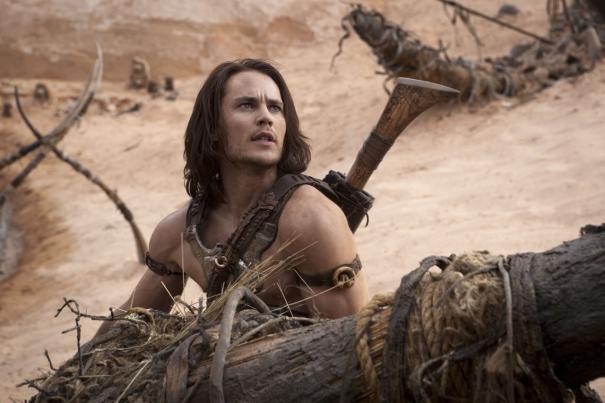
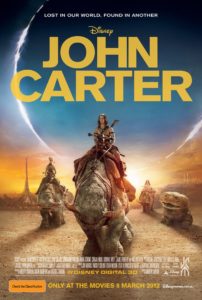

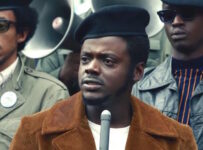
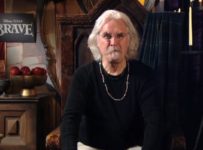
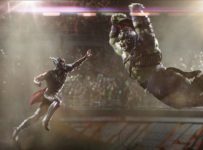
A bit off by about a century: John Carter first appeared in 1912, not 1812.
Ha! Thanks. For all of my re-reading, I miss the glaring typo in the first line. I even talk about him being “a century old”. Must’ve had 1812 on the brain that day. Aye, she was a good year.
As always, your prior knowledge on the subject shines through. It is highly informative and makes for good reading. I look forward to seeing the movie with high expectations. The swag of good actors (in my opinion), which also includes Bryan Cranston and Thomas Haden Church, should make it a blast.
I’m looking forward to the movie!